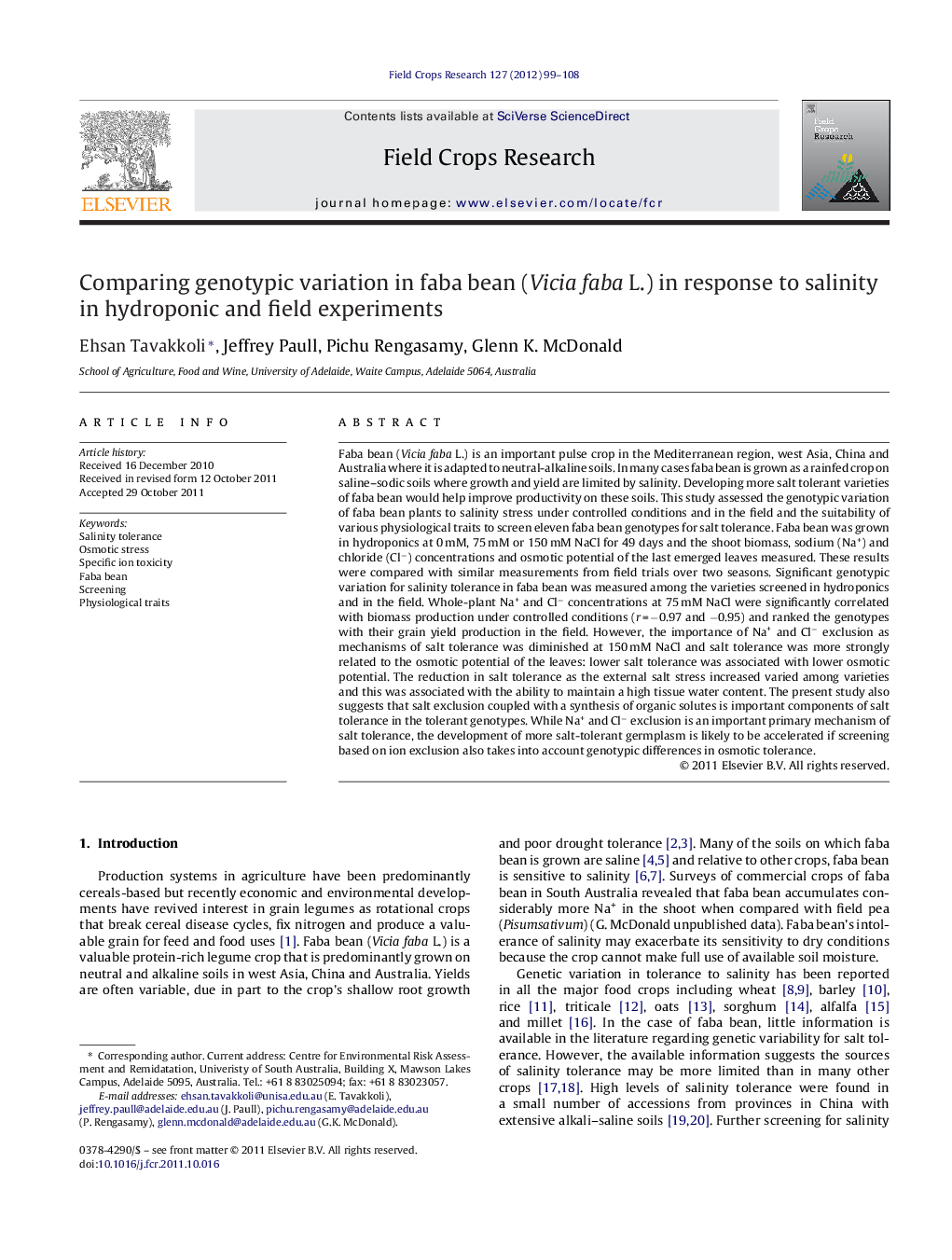| کد مقاله | کد نشریه | سال انتشار | مقاله انگلیسی | نسخه تمام متن |
|---|---|---|---|---|
| 4510703 | 1624736 | 2012 | 10 صفحه PDF | دانلود رایگان |

Faba bean (Vicia faba L.) is an important pulse crop in the Mediterranean region, west Asia, China and Australia where it is adapted to neutral-alkaline soils. In many cases faba bean is grown as a rainfed crop on saline–sodic soils where growth and yield are limited by salinity. Developing more salt tolerant varieties of faba bean would help improve productivity on these soils. This study assessed the genotypic variation of faba bean plants to salinity stress under controlled conditions and in the field and the suitability of various physiological traits to screen eleven faba bean genotypes for salt tolerance. Faba bean was grown in hydroponics at 0 mM, 75 mM or 150 mM NaCl for 49 days and the shoot biomass, sodium (Na+) and chloride (Cl−) concentrations and osmotic potential of the last emerged leaves measured. These results were compared with similar measurements from field trials over two seasons. Significant genotypic variation for salinity tolerance in faba bean was measured among the varieties screened in hydroponics and in the field. Whole-plant Na+ and Cl− concentrations at 75 mM NaCl were significantly correlated with biomass production under controlled conditions (r = −0.97 and −0.95) and ranked the genotypes with their grain yield production in the field. However, the importance of Na+ and Cl− exclusion as mechanisms of salt tolerance was diminished at 150 mM NaCl and salt tolerance was more strongly related to the osmotic potential of the leaves: lower salt tolerance was associated with lower osmotic potential. The reduction in salt tolerance as the external salt stress increased varied among varieties and this was associated with the ability to maintain a high tissue water content. The present study also suggests that salt exclusion coupled with a synthesis of organic solutes is important components of salt tolerance in the tolerant genotypes. While Na+ and Cl− exclusion is an important primary mechanism of salt tolerance, the development of more salt-tolerant germplasm is likely to be accelerated if screening based on ion exclusion also takes into account genotypic differences in osmotic tolerance.
► We assessed the genotypic variation of faba bean plants to transient salinity stress.
► Significant genotypic variation for salinity tolerance in faba bean was found in hydroponics and in the field.
► The whole-plant sodium and chloride concentrations were significantly correlated with biomass production under controlled conditions and their grain yield production in the field.
► Salt tolerance was more related to the osmotic potential of the leaves at higher levels of salinity.
► Salt exclusion coupled with a synthesis of organic solutes is important components of salt tolerance.
Journal: Field Crops Research - Volume 127, 27 February 2012, Pages 99–108